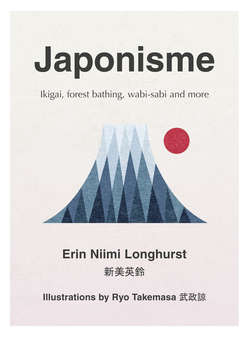Читать книгу Japonisme: Ikigai, Forest Bathing, Wabi-sabi and more - Erin Longhurst Niimi - Страница 7
Оглавление01
Kokoro
心
The heart and the mind
In Japanese, there are three words to describe the heart. The first is shinzou, the physical organ that beats within us all, and keeps us alive. (If a Japanese person tells you that their shinzou hurts, they’re not speaking metaphorically – get them to a doctor, pronto.) The second is ha-to, the shape of a love heart – the kind that you can’t escape until late February, once Valentine’s Day has passed. The third is kokoro.
Heart, mind and soul are inextricably linked in the word kokoro. The nearest English equivalent might be conscience; it’s a mentality or a feeling and it describes the emotions and desires inside all of us.
Nurturing your kokoro is where mindfulness begins, and this applies to every aspect of your life. I’ve been guilty of prioritising some areas at the expense of others, certainly in my working life. Getting burned out, being terrified of failure, or change, is something that I’ve struggled with before. But the most important thing I’ve learned on my journey so far is that failure is inevitable. This realisation has been one of the most liberating of all.
In Part One, I share different outlooks, philosophies and ways of thinking. Whether it’s accepting the imperfect, seeing the beauty in things that are broken or finding your motivation, taking the time to care for yourself in more ways than one (paying attention to mental health, as well as physical) will put things in perspective, help you to find joy and enable you to live a fuller, richer, happier life.
© Andre Benz on Unsplash
© photoBeard/Shutterstock.com
Shortly after my grandfather died, I took my first job out of university in a field I wasn’t passionate about. I had moved to London, a city where I didn’t know many people, and I lived with a partner who worked so much that they were mostly absent. During this period, I felt lost and adrift.
So I took my camera, and started to document my life in London – the food I ate, what I had enjoyed about my day and things that had made me feel happy at a time when I mostly wasn’t. It was starting my blog, following what made me feel good and sharing that part of myself that nourished me and helped me grow.
So first, let’s take a look at ways to find your ikigai, or purpose – the thing that drives you and makes you get out of bed in the morning. We’ll then look at wabi-sabi – accepting the nature of impermanence and transience and embracing the presence of chaos in life – before, finally, finding the beauty in the broken, through the art of kintsugi.
